Sony Bravia 8 II vs Bravia 9: what's new with Sony's latest TV?
Sony's new QD-OLED model vs its flagship Mini LED TV
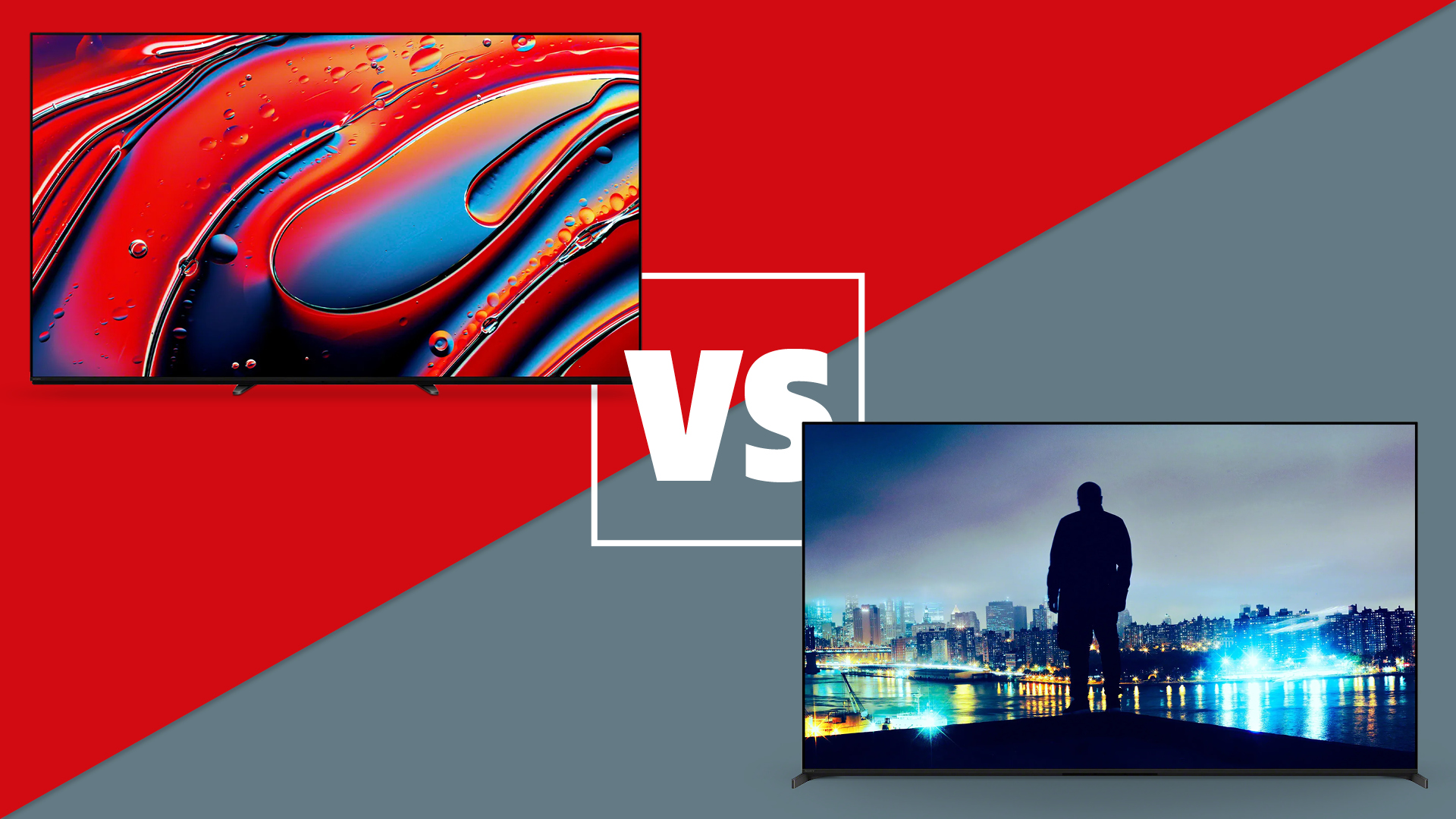
Sony's new 2025 TVs have been announced, and the big news is that there's no new flagship.
Instead, Sony is sticking with the Bravia 9 Mini LED TV as its range-topper, and is introducing the Bravia 8 II QD-OLED TV to sit below it.
While we will have to wait until we have had the new Bravia 8 II into our test rooms for a comparative test before we can proclaim which is best, we have seen it in action and digested its specs, so we can already outline the many differences between it and its Bravia 9 sibling.
Read on to find out which could be right for you.
Sony Bravia 8 II vs Bravia 9: price
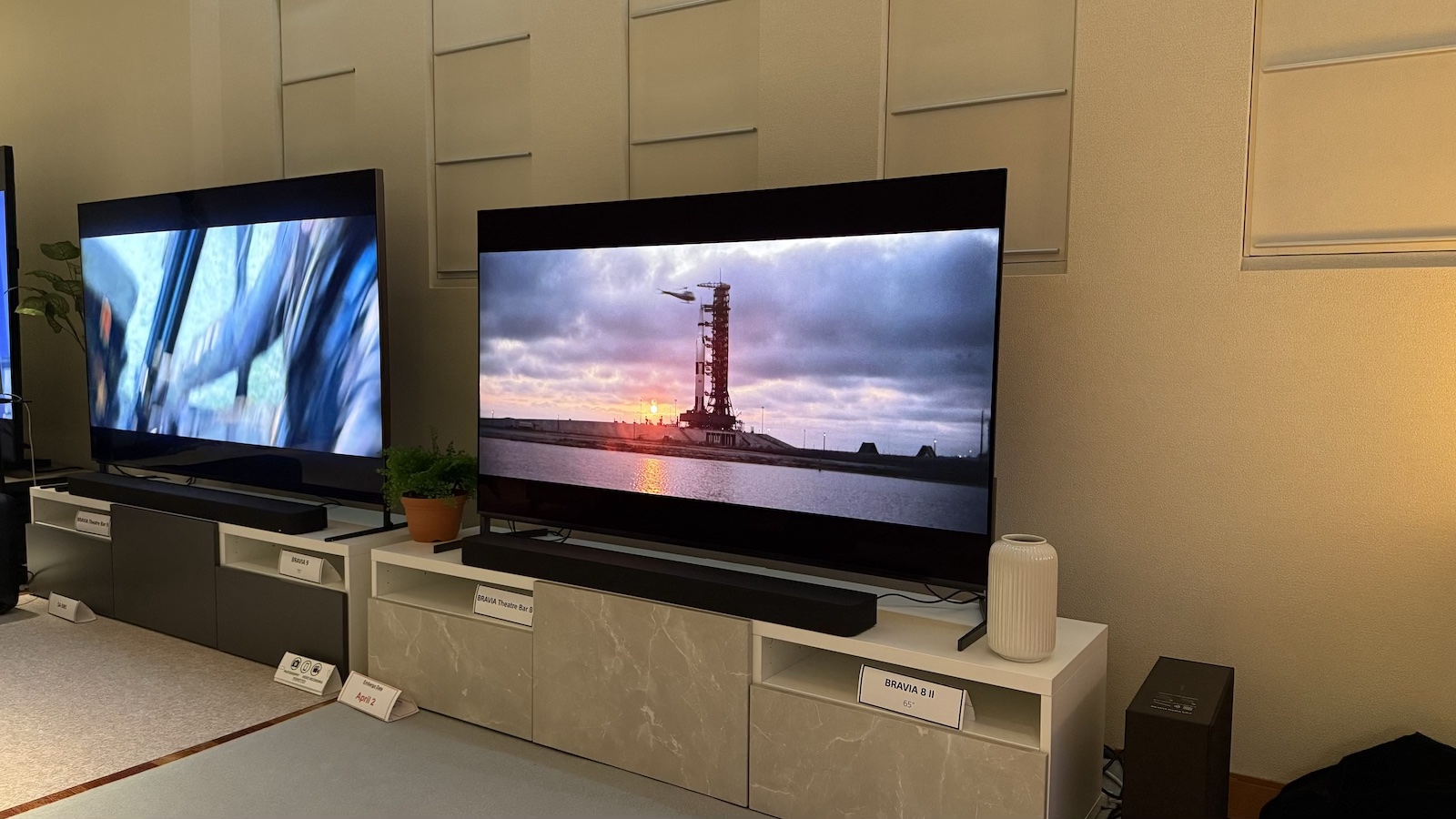
Being the step-down model, the Bravia 8 II is the cheaper of the two. It starts at £2499 / $3499 (around AU$5300) for the 55-inch model, and costs £2999 / $3999 (around AU$6400) for the 65-incher (Australian prices are TBC).
The Bravia 9 doesn't come in a 55-inch variant. Its smallest model is 65 inches, which was £2999 / $3299 / AU$N/A at launch. The 75-inch model was £4499 / $4000 / AU$6995 and 85-incher £4999 / $5500 / AU$7995 – we use the past tense because prices have since dropped significantly.
For example, the 65-inch Bravia 9 currently costs £2799, while the 75-incher is just £100 more, at £2899. So the Bravia 9 could end up being cheaper than the step-down Bravia 8 II, at least at first.
Sony Bravia 8 II vs Bravia 9: design
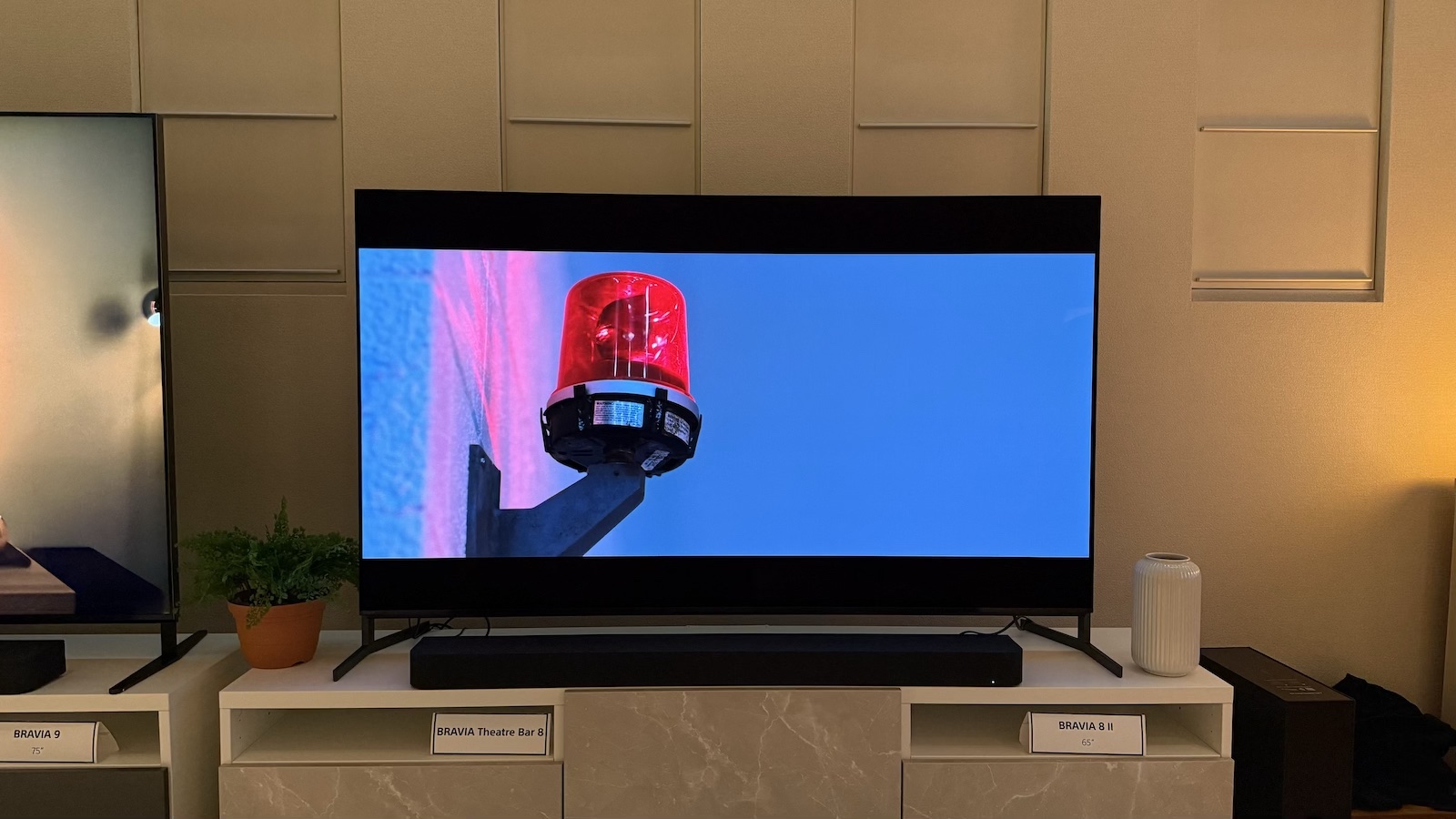
The Bravia 8 II replaces the A95L, and it looks very similar to it.
That's no bad thing – it's a smart, premium-looking chassis that's the slimmest in Sony's current line-up (and 1.4cm slimmer than the Bravia 9).
It has similar blade-like feet to the Bravia 9, but they can only be positioned at the furthest extremes of the TV's bottom edge. That means the Bravia 8 II can't be placed on furniture narrower than the set's width – 122cm for the 55-inch model and 145cm for the 65-inch version.
The Bravia 9's feet can be positioned towards the centre of the TV to help it fit on a smaller cabinet. Which makes it much more versatile in terms of positioning.
Both TVs' feet can be extended to raise the TV up and accommodate a soundbar.
Sony Bravia 8 II vs Bravia 9: features
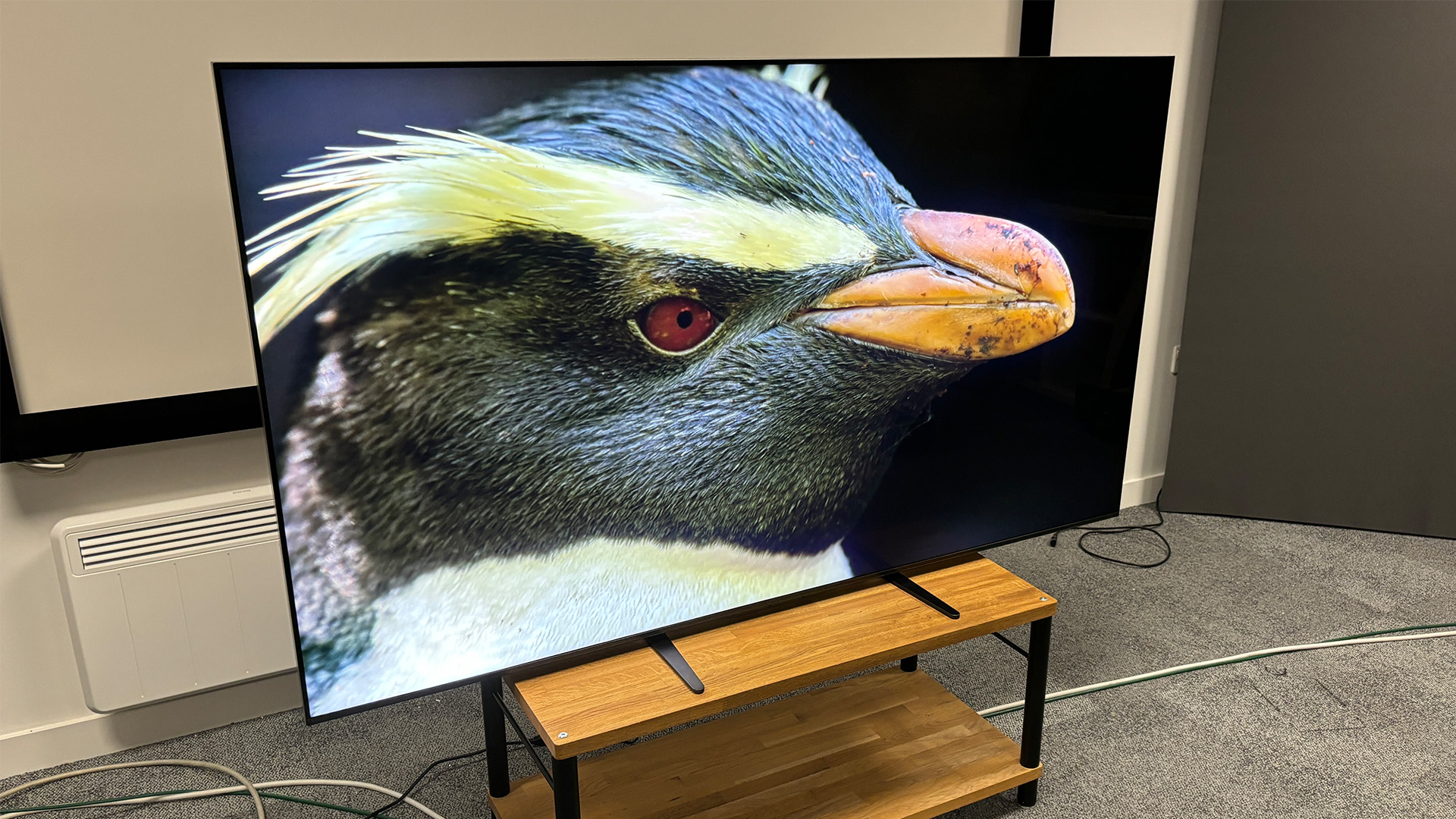
The main difference between these TVs is the panel technology they use. The Bravia 8 II uses a QD-OLED panel, while the Bravia 9 has a Mini LED screen.
Sony claims the Bravia 8 II's screen can go 25 per cent brighter than its A95L QD-OLED predecessor in terms of peak brightness, and 50 per cent brighter than the Bravia 8.
This should also mean an increase in colour volume. Sony claims it has improved its dark shading too – read the next section to see if we agree.
The Bravia 9's Mini LED backlighting system has some impressive claims of its own. Its cutting-edge drivers allow for more granular control of the backlight compared with other Mini LED TVs. This makes it better able to combine very bright and very dark elements in one image.
Sony says the Bravia 9 has three times as many dimming zones as the outgoing X95L, and is 50 per cent brighter. And all while being 30 per cent more power efficient.
Both sets use Sony's XR processor, but the Bravia 8 II has a new AI scene recognition system. This optimises the picture to what's on screen for greater realism.
Both TVs have calibrated modes for Prime Video, Netflix and the Sony Pictures Core streaming services. These aim to deliver the respective content as the director intended.
Both support the same formats of HDR (Dolby Vision, HDR10 and HLG, but not HDR10+) and IMAX Enhanced. And both have just two HDMI 2.1 sockets, meaning gamers with more than one modern console and a soundbar/surround system will probably have to do some socket switching to get the best performance.
But otherwise, gamers are well served by both TVs, with 4K/120Hz, VRR and ALLM on board.
The Bravia 9 has a 70W 2.2.2-channel speaker system, while the Bravia 8 II has the same 60W 2.2-channel setup as the A95L. The latter features actuators that vibrate the screen – that's not possible on a backlit display, so the Bravia 9's speakers are situated around the edge of the screen instead.
The Bravia 9 not only has 10W more total power than the Bravia 8 II, it also has two up-firing tweeters built into the top edge to deliver Dolby Atmos height effects. Which could make for a more immersive sound.
- What is QD-OLED? Everything you need to know
- Mini LED: all the details on OLED's rival
Sony Bravia 8 II vs Bravia 9: picture
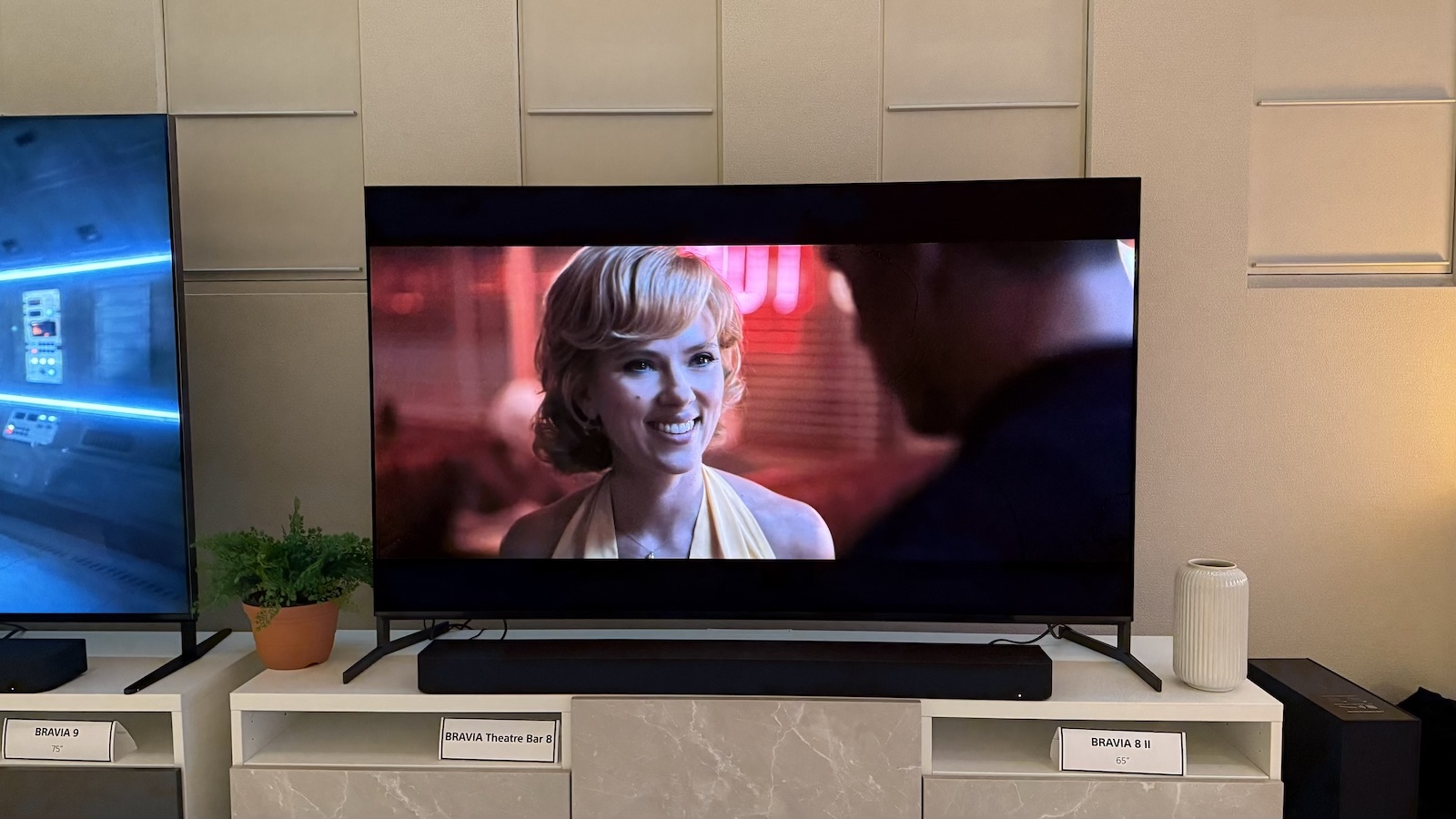
We haven't tested the Bravia 8 II yet, so can't give a definitive verdict on its picture. But we have had a hands-on session, so can tell you our first impressions.
Which are very good, on the whole.
A clip from the Kodi Smit-McPhee movie Alpha showed the bright sun with excellent brightness, but also with great detail and colour vibrancy.
"The shape of the sun was clearly visible from the Bravia 8 II but murky and indistinct from its rivals, and even the very brightest parts maintained a warmth that the LG G4 in particular couldn’t match," we wrote in our hands-on review.
Shadow detail and low-light colour volume were also excellent, with natural skin tones even in the shadiest sections.
Put it in its brightest and most vivid preset, and it looks genuinely exceptional. Colours pop but – crucially – they never look artificial. Which is some achievement.
It doesn't look to be a giant leap on from the A95L. But the increased brightness is obvious, even when not side by side with that set. We'll update this section once we've reached our final verdict after review.
The Bravia 9 earned four stars in our review. It's somewhat fussy, requiring a bit of menu tweaking to get it looking its best – but it's worth the effort.
The results can be dazzling. Watching Pan, "the highlights seen as the ship descends through space and glides into a dreamlike floating ocean are exceptional, with rich, impactful orange hues and noticeable detail in the very centre of the sun – something that we do not see in the deliveries of the LG G4 or Bravia 8," we wrote in our review.
Its contrast abilities add a real sense of depth to proceedings, with sharp outlines provoking a three-dimensional effect. Blacks might not be quite at OLED levels – inevitable on a backlit set – but they're still very impressive.
Colours are well balanced, and while skin tones could use a little extra warmth, particularly in low-light areas, they are still generally natural. Motion handling is superb, too..
But it's not quite as cinematic as the Bravia 8 II's little brother, the Bravia 8. The latter is just more detailed, sharper and cleaner. Skin tones are richer, and neon signs more vibrant.
The Bravia 9 is a dazzling TV, but for a more authentic viewing experience, the step-down Bravia 8 is the better bet.
How will it fare against the Bravia 8 II? Stay tuned...
Sony Bravia 8 II vs Bravia 9: sound
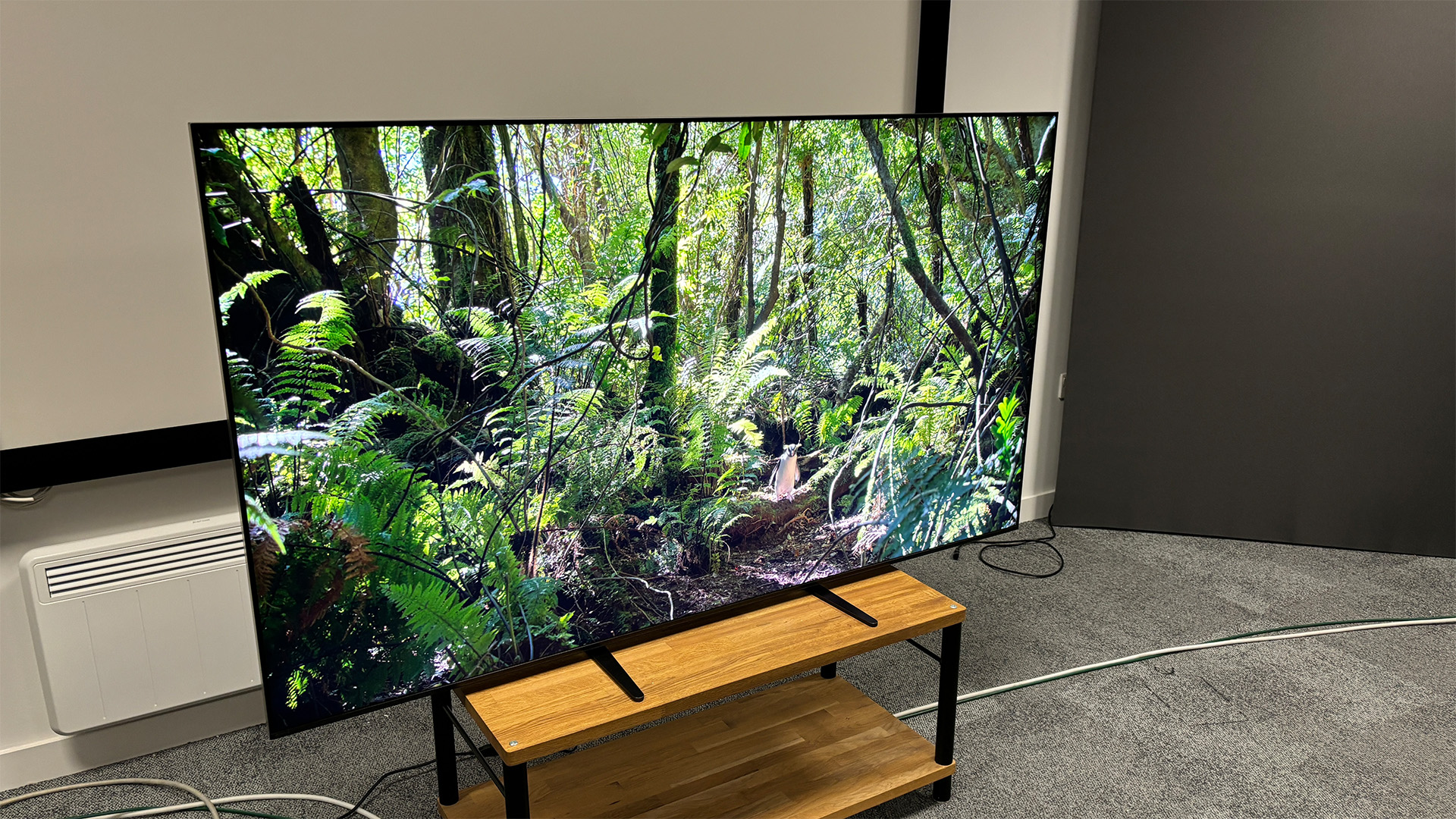
Sadly, our demo of the Bravia 8 II didn't include sound, so we weren't treated to its sonic skills. But with the same speaker arrangement as the A95L, it should sound the same as that set.
Again, that's good news. The A95L is very good by TV standards, sounding direct, detailed and dynamic. And despite lacking up-firing drivers, the A95L makes a decent fist of Dolby Atmos sound, with the audio stretching beyond the confines of the TV.
The A95L is a bit light on bass though, and we expect the Bravia 8 II to be the same. We'll update this once our review verdict is in.
And the Bravia 9? Typically for a Sony, it sounds very good indeed, especially thanks to the new up-firing drivers, which really add a sense of height. They make the sound feel more spacious, too.
The sound has great directionality, and the TV projects very well into the room. We like the Voice Zoom 3 feature too, which enhances the dialogue to make it clearer without compromising the other audio effects.
Again, it is a little bass-light and lacking in punch. But the upside is that it stays within its limits, and so doesn't distort.
Sony Bravia 8 II vs Bravia 9: early verdict
It's too early to tell which is the better TV, as we haven't yet reviewed the Bravia 8 II. But we have a pretty good idea of what to expect.
It could actually be more expensive than the Bravia 9's equivalent 65-inch model, to begin with, at least. That's thanks to the Bravia 9's price dropping since launch. Though we can expect the same of the Bravia 8 II in time.
If our first impressions are anything to go by, the Bravia 8 II could offer a more natural-looking picture than its flagship sibling, too, though the lack of up-firing drivers means the Bravia 9 could be the better-sounding of the two TVs.
We'll update this comparison once we've reviewed the Bravia 8 II.
MORE:
Read our Sony Bravia 8 II hands-on review
And our Sony Bravia 9 review
Sony 2025 TV lineup: everything you need to know
The best Sony TVs you can buy
Get the What Hi-Fi? Newsletter
The latest hi-fi, home cinema and tech news, reviews, buying advice and deals, direct to your inbox.
Joe has been writing about tech for 20 years, first on staff at T3 magazine, then in a freelance capacity for Stuff, The Sunday Times Travel Magazine (now defunct), Men's Health, GQ, The Mirror, Trusted Reviews, TechRadar and many more. His specialities include all things mobile, headphones and speakers that he can't justifying spending money on.
You must confirm your public display name before commenting
Please logout and then login again, you will then be prompted to enter your display name.
